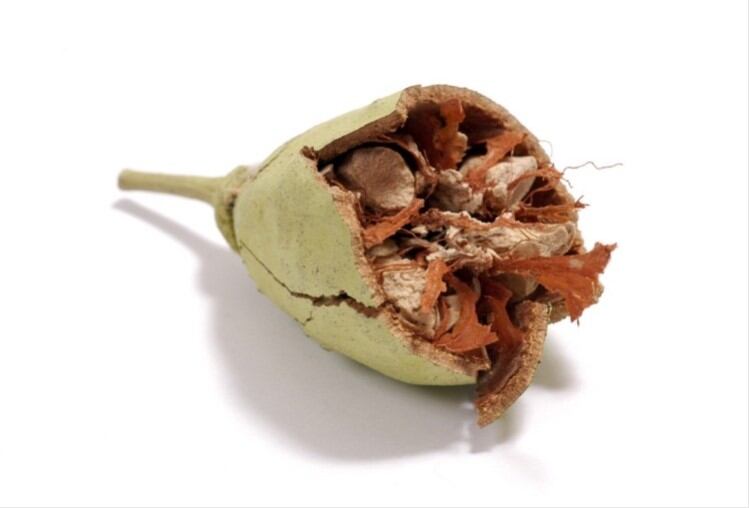In a trial involving 31 healthy adults, aqueous baobab extract significantly reduced postprandial glycaemia incremental area under the curve (AUC) and blood glucose maximum concentration two hours after ingestion.
In addition, chemical analysis of the extract revealed a high total phenolic content, strong antioxidant activity and high capacity to inhibit reactive oxygen species.
“The present results encourage the use of this food component as a promising source of natural antioxidants and a hypoglycaemic agent under glucose load acute conditions,” wrote the researchers in the journal Nutrients.
The tree of life?
The baobab tree is emblematic of Africa, where its fruit, leaves and bark have been used for medicinal purposes for centuries, and its potential health properties are increasingly a subject of global scientific interest.
Although evidence is limited to a few studies, baobab fruit has shown promising results in controlling glycaemia. In one human trial, it was found to significantly reduce the blood glucose AUC at two and three hours.
In another, white bread enriched with polyphenol extract from baobab significantly decreased insulin response AUC, but without reducing postprandial glucose response.
In addition, in animal models, extracts of baobab fruit pulp have shown a hypoglycaemic effect.
Baobab has also been shown to possess potential antioxidant properties, linked to its bioactive compounds, which include polyphenols.
The researchers set out to advance knowledge in this field by investigating whether the ingestion of baobab aqueous extract by healthy adults could improve glycaemic response, due to its polyphenol compound content.
They tested their hypothesis in a randomised controlled clinical trial, in which they studied the glycaemic effect, bioactive compound content and antioxidant activity of baobab fruit extract.
After a period of 8-10 hours of fasting, the control group was given glucose solution, prepared with 75 grams (g) of glucose, and the intervention group was given glucose solution followed by 250 millilitres (ml) baobab fruit aqueous extract (33.33g fresh weight).
Blood glucose levels were measured at 30 minute intervals up to 120 minutes. Based on the glycaemia values, the blood glucose incremental AUC of each participant was defined.
Improved blood glucose response observed
Glucose maximum concentration and postprandial glycaemia incremental AUC were significantly lower in the intervention group at 120 minutes, although no effect on variation of glucose maximum concentration was observed.
“In this context, this study supports the hypothesis that the ingestion of baobab aqueous extract may improve postprandial glycaemia in healthy adults,” wrote the researchers.
They said these findings were consistent with Coe at al’s 2013 study in which the glycaemic response AUC was significantly reduced after taking baobab extract.
The researchers said the beneficial effect on glycaemic response can be attributed to the polyphenols identified in baobab extract, which include epicatechin and procyanidins.
They cited previous in vitro and in vivo studies in which these polyphenols were found to promote insulin secretion by increasing the level of GLP-1, which contributes to an improvement in blood glucose response.
They said that since the fruit analysed in the present study has a high polyphenolic content, these compounds may contribute to the increase of GLP-1 and, consequently, to insulin secretion, which may explain the hypoglycaemic effect.
More studies needed to explore mechanisms
However, as the researchers did not assess the effect of baobab fruit extract on GLP-1 and insulin secretion, they recommended that this hypothesis should be addressed in further studies.
Another potential mechanism could be the inhibition of glucose absorption by the polyphenols; a 2010 study found the glucose transporters SGLT1 and GLUT2 to be inhibited by polyphenols in apple and strawberry.
“Future studies should also investigate the effect of polyphenols from baobab fruit extract on enterocyte glucose transporters as it could be a possible way to explain the hypoglycaemic effect found in the present study,” said the authors of the current study.
Baobab’s capacity to inhibit reactive oxygen species could also be relevant to its glycaemia regulating effect by eliminating the oxidative stress that has been observed during the state of postprandial hyperglycaemia.
“The results support our hypothesis that baobab aqueous extract possesses an antioxidant capacity though the inhibition of superoxide anions and nitric oxide radicals, which can lead to oxidative stress prevention,” they wrote.
Source: Nutrients
“Adansonia digitata L. (baobab fruit) effect on postprandial glycemia in healthy adults: a randomized controlled trial”
Authors: Rita K, Bernardo, MA, Silva ML, Brito J, Mesquita MF, Pintão AM, Moncada M.
Published online: doi.org/10.3390/nu14020398


